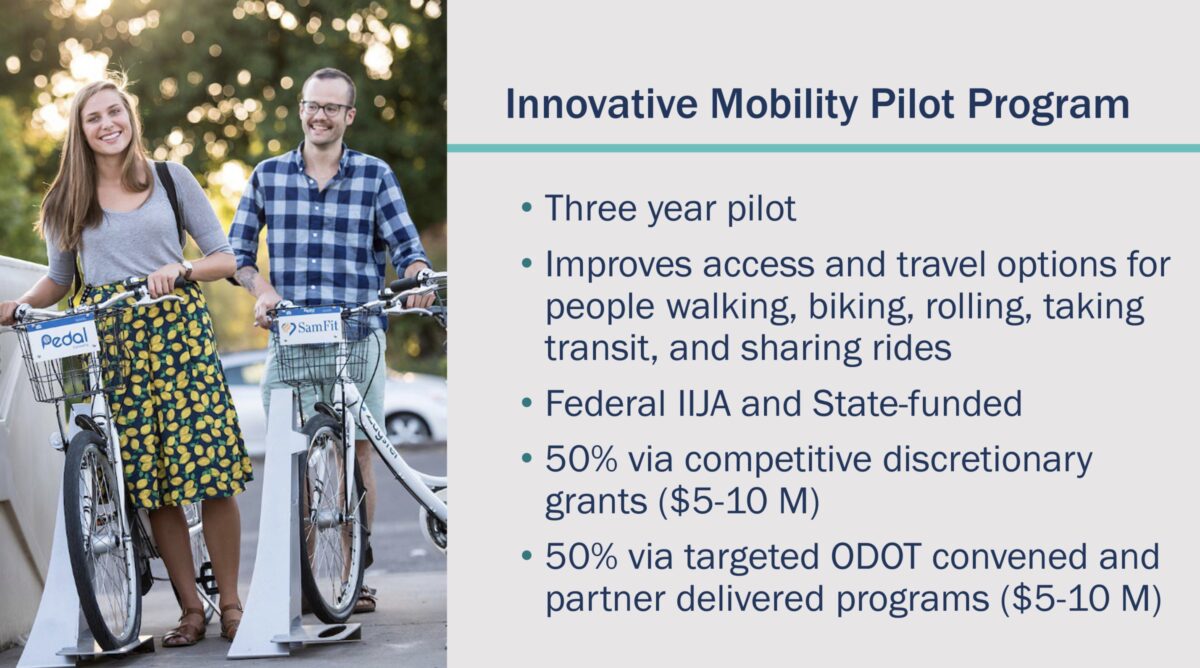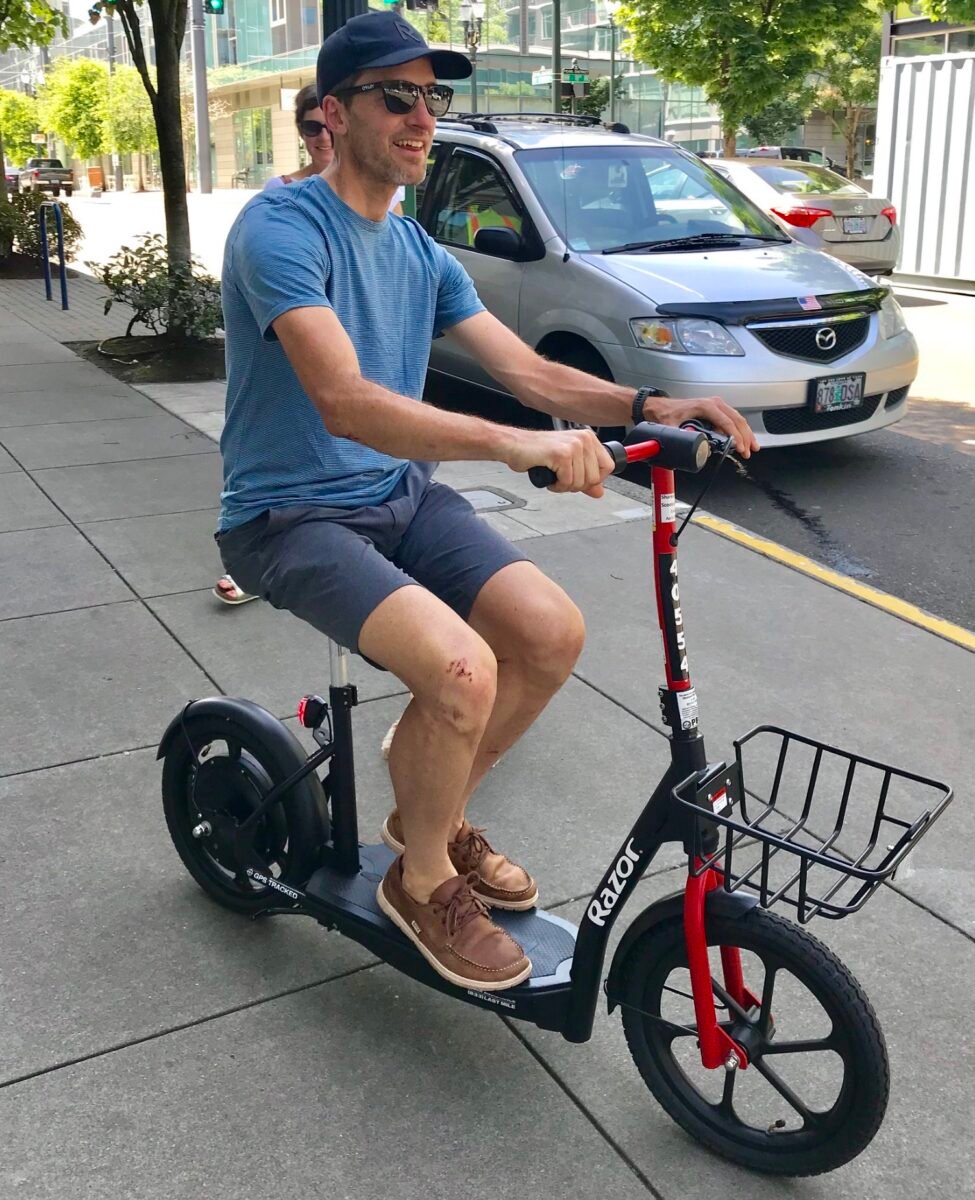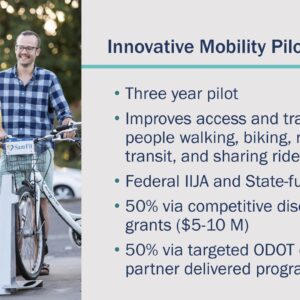Interested in using federal infrastructure funds for a cool active transportation project? You’re in luck, because the Oregon Department of Transportation’s Innovative Mobility Program (IMP) is now accepting grant applications, and organizations across the state can get up to $5,000 for project ideas that align with the IMP’s goals.
The IMP is a new statewide initiative funded by the President Biden’s Infrastructure Investment and Jobs Act (IIJA) that “aims to improve access to public transportation, reduce the number of trips Oregonians make by car, and reduce greenhouse gas emissions.” Applicants can include local governments, public transportation providers, Tribes and certified nonprofits who can demonstrate their project idea will “support historically excluded groups and increases social equity.”
“The IMP has a special focus on equity and helping historically excluded groups to get to where they need to go more quickly, cheaply and safely,” ODOT states.

ODOT says these IMP grants could fund projects like bike/scooter lending libraries and share programs, community events like Sunday Parkways, safety education and awareness programs and more.
The IMP is the last big contribution to Oregon’s transportation department from outgoing transportation commissioner Alando Simpson, who came up with the idea for the program when the OTC was deciding how to divvy up IIJA money. Simpson was able to negotiate $10 million in federal funds for the IMP, and thanks to state contributions, they’ll have $20 million for the program for 2022-2025.
Transportation and climate advocates wanted to use the rare influx of flexible funding the IIJA offered to fund programs that would reduce Oregonians’ reliance on fossil fuels. Policymakers and activists pushed the OTC to avoid using IIJA funds for freeway expansion projects or other car-oriented projects. But ultimately the Commission allocated about an eighth ($50 million) of the flexible federal money to “complete a number of highway and interchange improvements to streamline the movement of goods,” a.k.a. freeway expansions, which Simpson was supportive of.
“I just need to come up with something more creative and trigger a new market opportunity for us to get into cleaner forms of transportation,” he said at a meeting back in March. “Like alternative forms of transportation that can address our climate and social challenges.”
The existence of this program shows how important just one member of the OTC can be in shaping Oregon’s transportation system, and why there’s so much attention on Governor Kate Brown’s most recent pick.
There’s no deadline for the applications, as grants will be awarded on a rolling basis over the next three years. You can find the application and more information on the IMP program website.







Thanks for reading.
BikePortland has served this community with independent community journalism since 2005. We rely on subscriptions from readers like you to survive. Your financial support is vital in keeping this valuable resource alive and well.
Please subscribe today to strengthen and expand our work.
Is there a pathway for some of this money to be spent on Biketown? They ought to buy more bikes, expand the service area, and expand the program where you get a credit for parking at a station to more than just Biketown For All.
Sure would be nice. I think I remember back in spring seeing a few parked on the sidewalks out my way, past 122nd, for a few weeks and haven’t seen them since. I see plenty of the scooter-boards around though.
Agreed! I wanted to use Biketown last Saturday night, but we needed 2 bikes. There were no docks with more than 1 bike in Old Town or surrounding areas, only individual bikes scattered around. With how big the service area has become we need 2 or 4 times as many Biketown bikes.
And can we get some cheaper non-e-bikes back? New York still mostly has regular bikes and their system works well because there are tons of bikes in the city center.
More bikes + incentive for riders to take them back to stations would be excellent. I think non e-bikes could work but they would absolutely need to have gears. NYC isn’t quite as hilly as it is here and going up a hill on a single speed is torture.
We need roughly 2x the fleet (without expanding the territory) for the service to be really effective and reliable. The bike density is way too low.
These projects are only interesting to me at a policy level to the extent that they displace car travel. Is there any evidence that Biketown or scooters or whatever do this on an interesting level?
To the extent that “innovative mobility” is used recreationally, I don’t think we should be subsidizing it. And I would love to see a full accounting of emissions from these systems that includes all the recharging and rebalancing activity that is supported by motor vehicles.